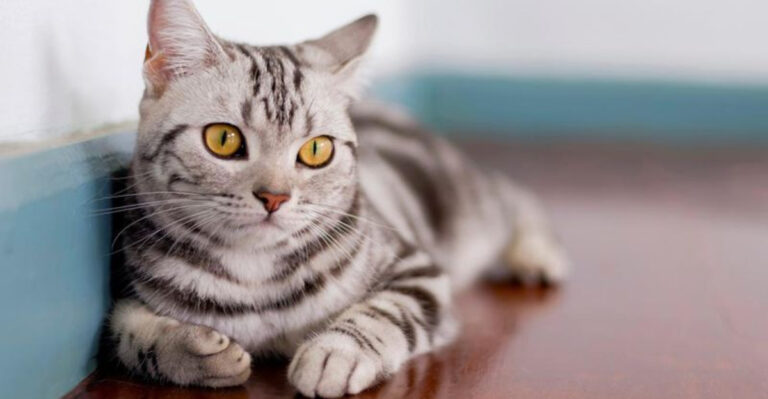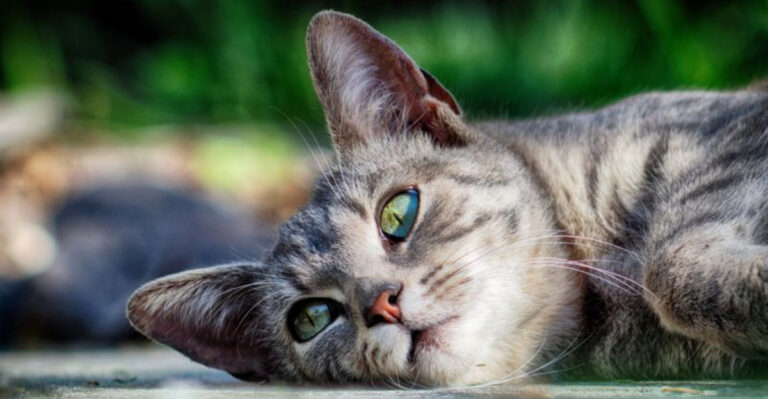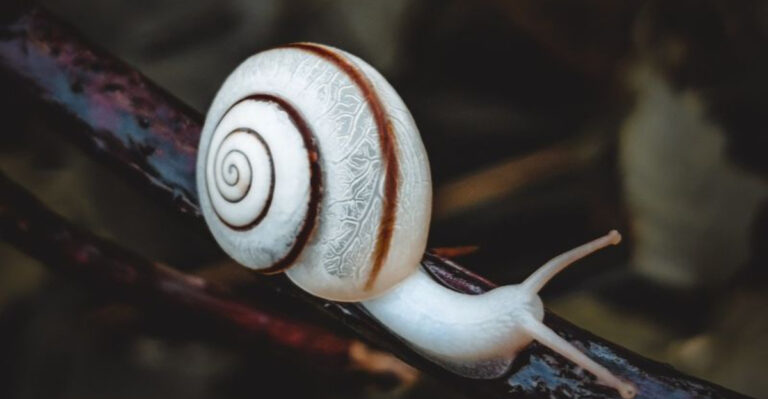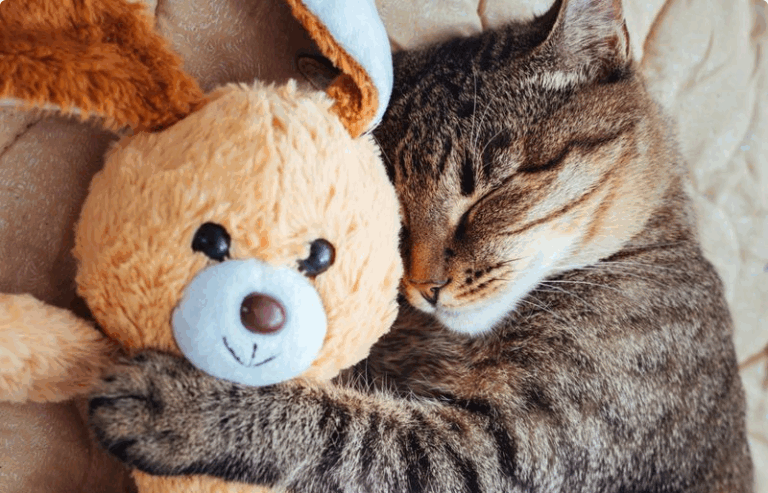12 Animals With The Strongest Jaws In The Wild
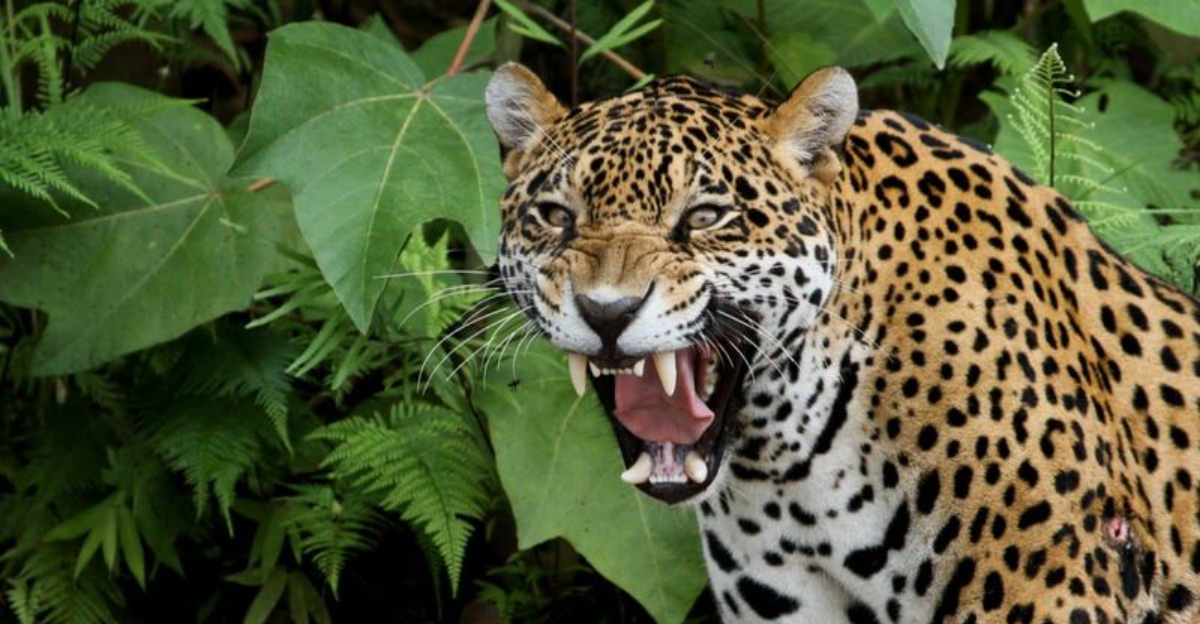
When it comes to survival in the wild, jaw strength can mean the difference between a meal and going hungry. Animals have evolved incredible biting power to hunt prey, defend territories, and crack tough foods.
From ocean predators to land mammals, nature has created some truly impressive chomping machines that would make even the bravest explorer think twice before getting too close.
1. Saltwater Crocodile – The Undisputed Champion
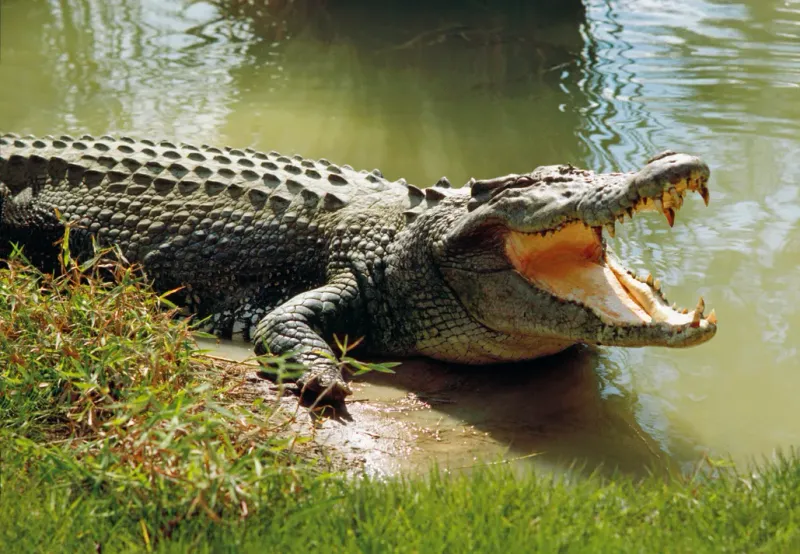
Nothing in the animal kingdom comes close to matching the bone-crushing power of a saltwater crocodile’s bite. These prehistoric monsters pack a whopping 3,700 pounds per square inch (PSI) of pressure – strong enough to snap a buffalo’s spine in half!
Saltwater crocs use their 60+ teeth not just for killing but also for dragging large prey underwater. Their jaws lock automatically when closed, meaning once they’ve got you, there’s virtually no escape.
Fun fact: While their bite force is extraordinary, the muscles that open a crocodile’s mouth are surprisingly weak. A simple rubber band can keep a croc’s mouth shut!
2. Hippopotamus – Surprising Power In A Herbivore
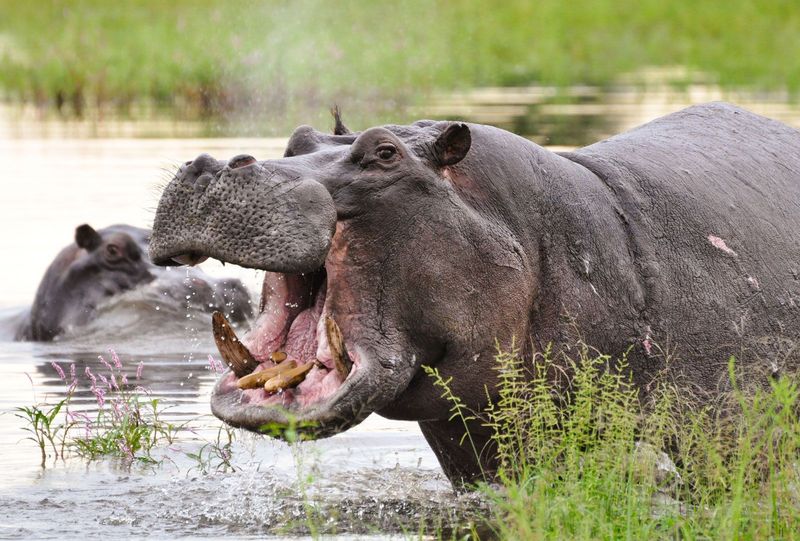
Don’t be fooled by their plant-based diet – hippos possess one of the most formidable bites in the animal kingdom. Their massive jaws can open a staggering 150 degrees and deliver a crushing force of 1,800 PSI, easily capable of snapping a crocodile in half or biting through a small boat.
Those impressive canine teeth can grow up to 20 inches long and are constantly sharpening against each other. Despite their vegetarian lifestyle, hippos kill more humans in Africa than any other large animal.
The hippopotamus uses its jaw strength primarily for defense and establishing dominance, not for eating meat.
3. Jaguar – The Skull Crusher
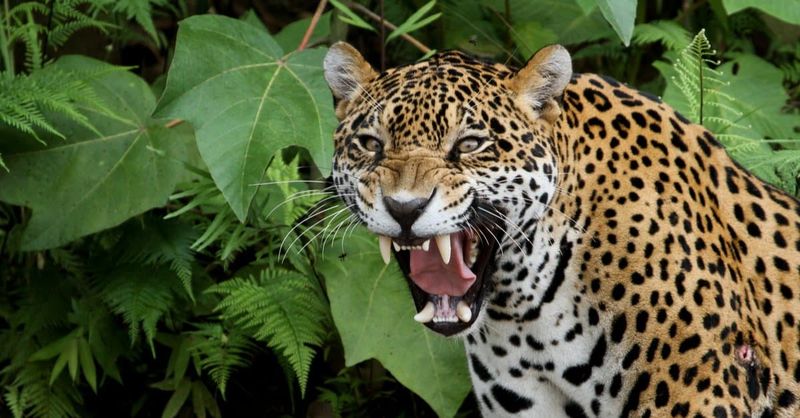
Masters of the kill-bite, jaguars have evolved the strongest jaws of any big cat relative to their size. Unlike lions or tigers who go for the throat, jaguars target the skull or spine, using their 1,500 PSI bite to puncture straight through bone.
Their unique hunting style allows them to take down prey much larger than themselves, including caimans and capybaras. A jaguar’s canine teeth are shorter but thicker than other big cats, making them perfect for their bone-crushing hunting technique.
Perhaps most impressive is how they can maintain this incredible pressure while dragging prey up trees to eat in peace – a feat no other big cat can match.
4. Hyena – Built For Bone Crushing
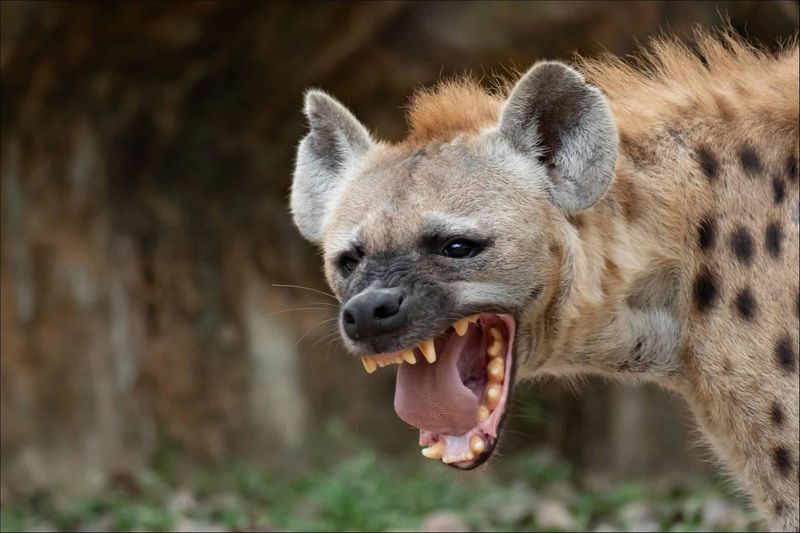
The laughing reputation of hyenas masks their serious hardware. With specialized molars and jaw muscles that account for 9% of their body weight, hyenas deliver a bone-shattering 1,100 PSI of pressure – enough to pulverize an entire zebra skeleton.
Their digestive system complements this jaw power perfectly. After crushing bones into smaller pieces, hyenas can digest the fragments completely, extracting every last bit of nutrition from their kills.
Unlike big cats that must avoid bones, hyenas actually target them, sometimes returning to old kills long after other predators have moved on. This unique adaptation allows them to survive in harsh environments where food scarcity makes wasting any part of prey a luxury.
5. American Alligator – The Ambush Specialist
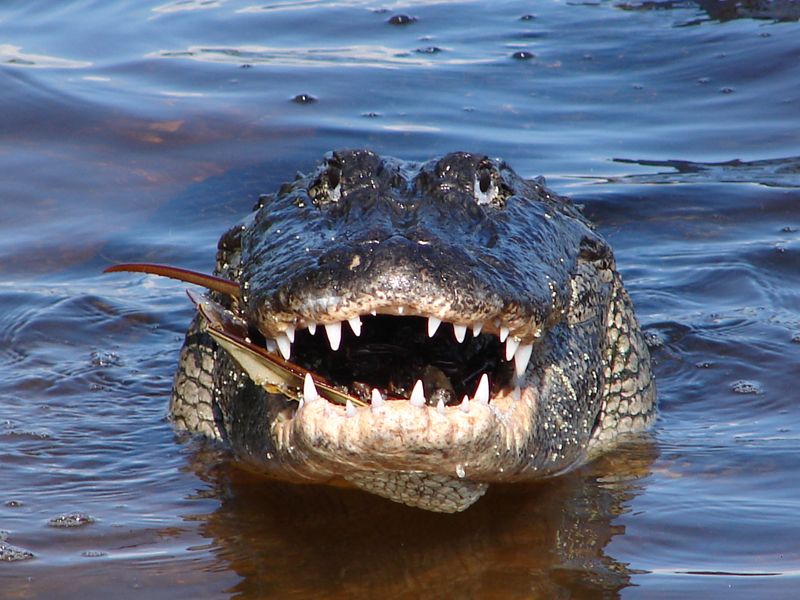
Lurking beneath murky waters, American alligators pack a whopping 2,125 PSI bite – enough force to crush a turtle’s shell in one snap. Unlike their saltwater crocodile cousins, these reptiles have broader, U-shaped snouts perfect for their ambush hunting style.
When an alligator bites, it’s not just the initial chomp that’s dangerous. They perform the infamous “death roll” – spinning their bodies to tear chunks from prey while maintaining that vise-like grip.
Despite this fearsome power, mother alligators show remarkable gentleness when carrying their hatchlings in the same jaws that can snap through bone. They can precisely control their bite force, allowing for both devastating attacks and delicate handling.
6. Gorilla – Primate Jaw Champion
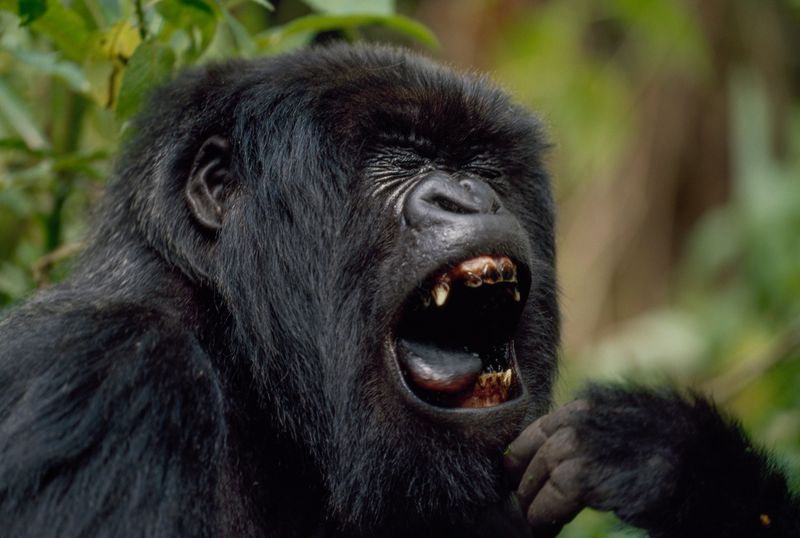
Mountain gorillas might seem peaceful as they munch on bamboo, but their jaws tell a different story. Packing a bite force of around 1,300 PSI, these gentle giants have molars designed for grinding tough vegetation and massive jaw muscles that could easily crush nuts most humans couldn’t crack with tools.
Male silverbacks use their impressive dental equipment primarily for display. When threatened, they bare their long canines in warning displays that usually prevent physical confrontations.
What’s fascinating is how gorillas’ jaw strength evolved not for hunting but for processing fibrous plants. Their digestive system depends on this grinding power to break down cell walls in vegetation that would be indigestible otherwise.
7. Great White Shark – Ocean’s Perfect Biter
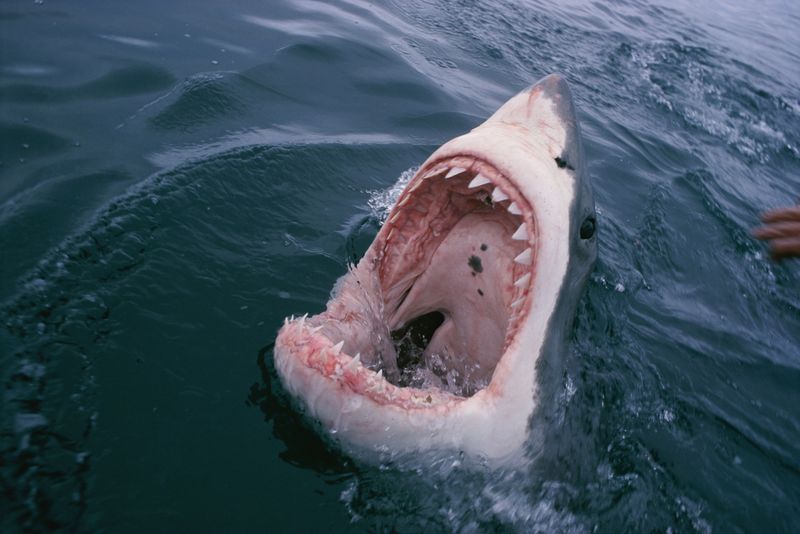
The poster child for oceanic power, great white sharks deliver approximately 4,000 PSI through rows of serrated teeth designed to slice through flesh like butter. Unlike most animals on this list, great whites don’t just bite down – they actively shake their heads side-to-side, creating a sawing motion that cuts through tough seal hide and blubber.
These apex predators replace their teeth throughout their lifetime, with new ones continuously developing in rows behind the active teeth. A single shark might go through 20,000+ teeth in its lifetime!
When hunting, great whites often strike from below with such force that they can launch their 2-ton bodies completely out of the water – a hunting technique called breaching.
8. Polar Bear – Arctic Crushing Power
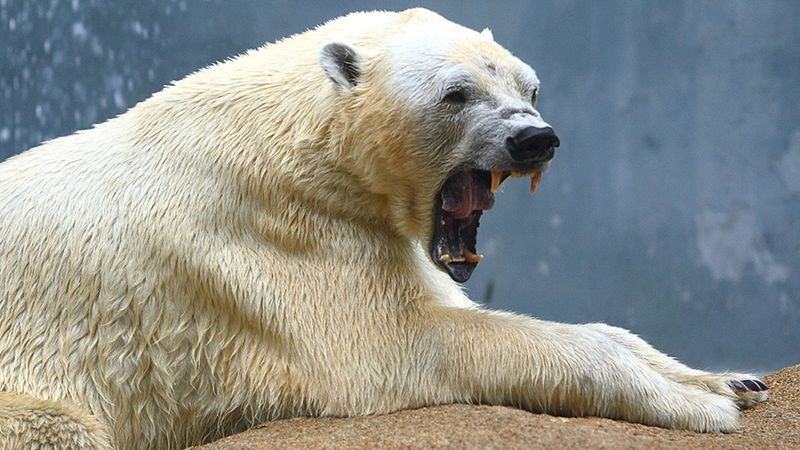
The largest land carnivores on Earth come equipped with jaws to match their status. Polar bears boast a bite force of approximately 1,200 PSI, perfectly adapted for their harsh Arctic lifestyle where they must crush through seal bones and thick blubber.
Their elongated skull and strong neck muscles work together to generate massive force. Unlike other bears who are omnivores, polar bears are almost exclusively meat-eaters, making their powerful bite essential for survival.
What’s remarkable is how precisely they can use this strength. A polar bear can delicately pluck tiny Arctic berries when available or use those same jaws to drag a 200-pound seal through a hole in the ice. This versatility makes them the undisputed masters of their frozen realm.
9. Tasmanian Devil – Small Package, Mighty Crunch
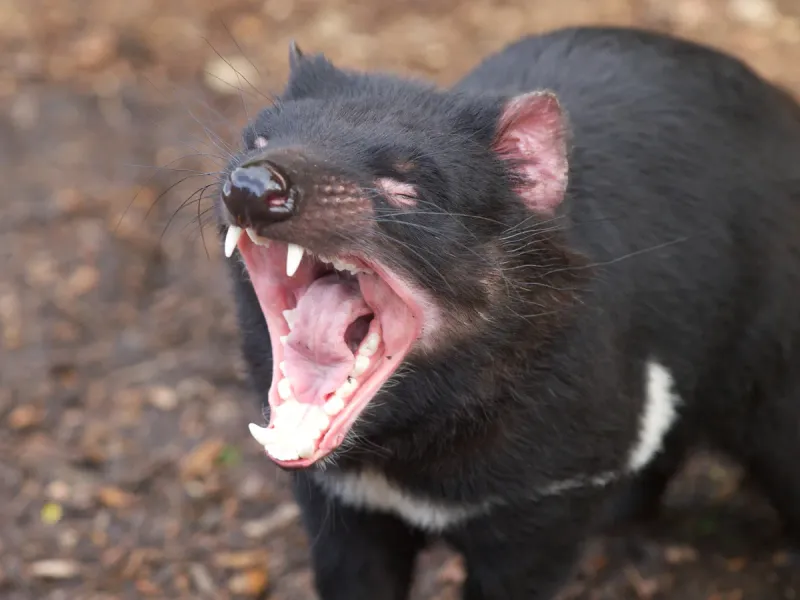
Don’t let their small size fool you – pound for pound, Tasmanian devils might have the most impressive bite in the mammal world. These cat-sized marsupials generate a jaw pressure of 553 PSI, stronger than many animals ten times their size!
Their oversized head houses jaw muscles that make up an astonishing percentage of their body weight. This power allows them to consume their prey completely – bones, fur, and all – leaving virtually nothing behind.
Tasmanian devils are famous for their bone-chilling screams and aggressive feeding frenzies, where their powerful jaws come in handy during competitions with other devils. Despite their fearsome reputation, these unique creatures are endangered, threatened by facial tumor disease and habitat loss.
10. Nile Crocodile – Africa’s Ancient Biter
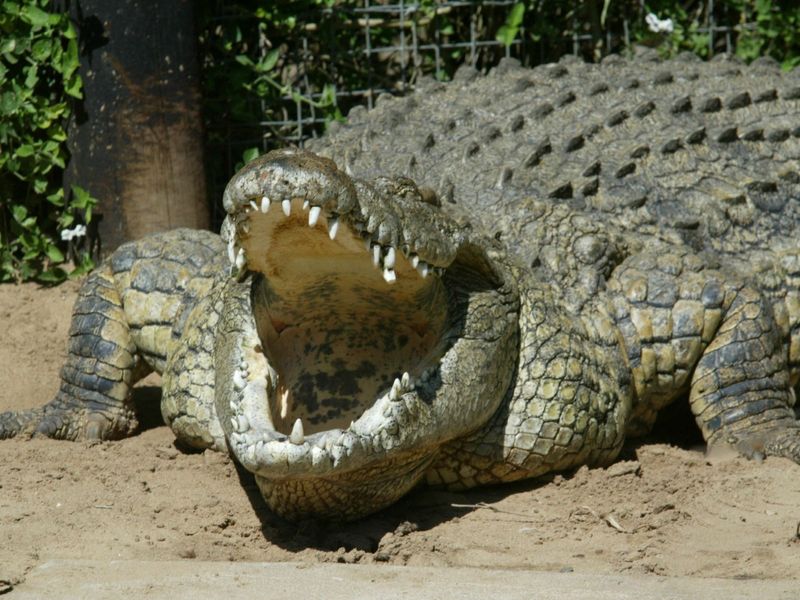
Second only to their saltwater cousins, Nile crocodiles deliver a jaw-dropping 3,000 PSI of pressure. These prehistoric predators use their 64-68 teeth to grab everything from fish to wildebeest attempting to cross rivers during migration.
Unlike mammals whose jaw strength comes primarily from muscles, crocodilians benefit from their skull structure. The fulcrum of their jaw is positioned far back, creating a mechanical advantage that multiplies the force their muscles generate.
Nile crocodiles have mastered the art of patience, sometimes waiting motionless for hours before launching lightning-fast attacks. Their bite is so powerful that once they’ve clamped down on prey, escape is virtually impossible – a deadly efficiency that has remained unchanged for millions of years.
11. Orca – The Ocean’s Tactical Biter
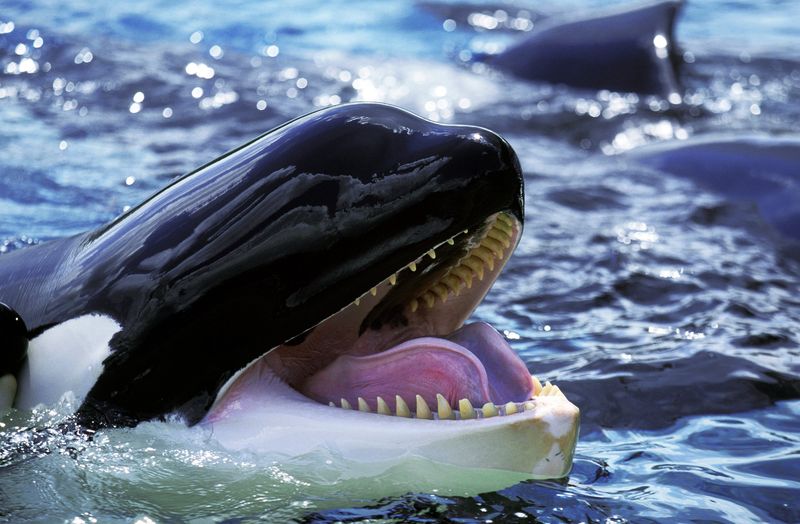
Killer whales combine raw power with surgical precision, delivering around 19,000 newtons of force through their interlocking teeth. Unlike sharks that rely on replaceable teeth, orcas must maintain their permanent set – making their controlled bite all the more impressive.
These intelligent hunters use different biting techniques depending on their prey. When hunting sharks, they precisely target the liver, while seals might be incapacitated with a powerful bite to the flipper before being finished off.
What makes orcas truly special is how they’ve developed distinct hunting cultures. Different pods have specialized biting and hunting techniques passed down through generations, showing that their impressive jaw power is matched only by their remarkable intelligence.
12. Grizzly Bear – Wilderness Crusher
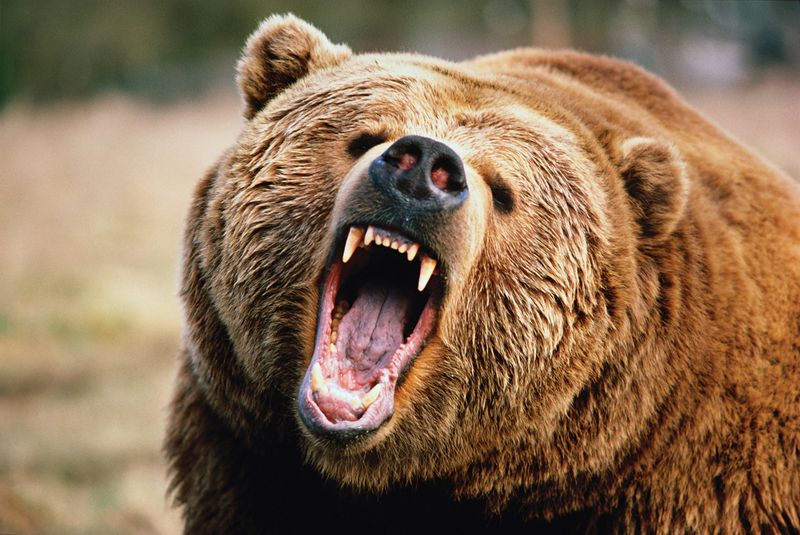
The mighty grizzly combines versatility with raw power, sporting a bite force of approximately 1,160 PSI. Those impressive jaws can crunch through nuts and bones with equal ease, reflecting their omnivorous diet that ranges from berries to bison.
A grizzly’s massive head houses jaw muscles anchored to a pronounced sagittal crest – the ridge running along the top of their skull. This anatomical feature provides additional surface area for muscle attachment, dramatically increasing bite force.
Perhaps most impressive is how these bears use their jaws as tools. They can delicately pick tiny berries, tear apart logs hunting for insects, or deliver killing bites to large prey. This adaptability has helped grizzlies become one of North America’s most successful large predators.

